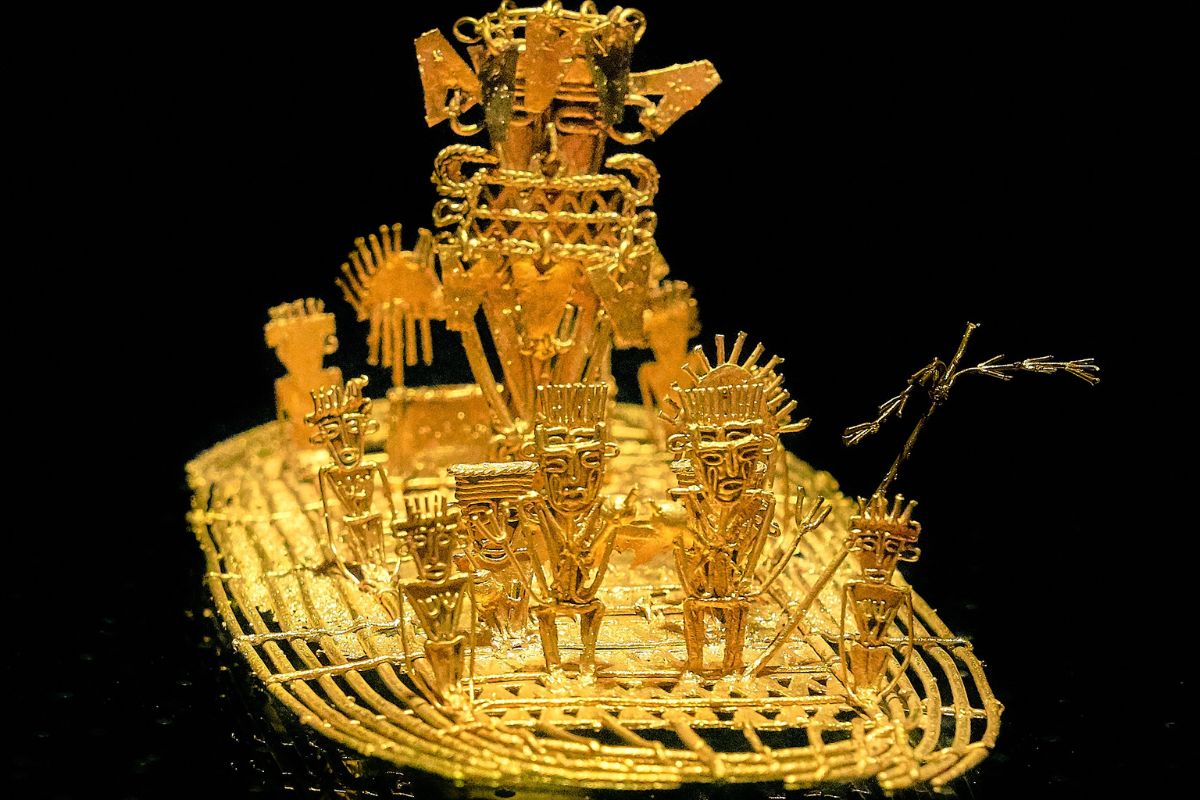
Muisca religion is a fascinating blend of mythology, rituals, and deities that shaped the lives of the Muisca people in pre-Columbian Colombia. Ever wondered how these ancient beliefs influenced their daily lives and culture? Muisca religion revolved around nature and celestial bodies, with gods representing elements like the sun, moon, and rain. They performed elaborate ceremonies to honor these deities, seeking their favor for bountiful harvests and protection. The Muisca also believed in an afterlife, with rituals to ensure safe passage for the deceased. Understanding Muisca religion offers a glimpse into the spiritual world of one of South America's most intriguing civilizations.
Muisca Religion: An Overview
The Muisca people, indigenous to the central highlands of Colombia, had a rich and complex religious system. Their beliefs and practices were deeply intertwined with their daily lives, nature, and the cosmos.
- The Muisca religion was polytheistic, meaning they worshipped multiple gods and goddesses.
- Chiminigagua was considered the supreme creator god, responsible for the creation of the universe.
- Bochica, a cultural hero, was believed to have taught the Muisca people agriculture, laws, and religion.
- The goddess Chía, associated with the moon, was highly revered and had a temple dedicated to her in the city of Suamox.
- Sué, the sun god, was another major deity, symbolizing warmth, light, and life.
Sacred Sites and Rituals
The Muisca held various sacred sites and performed numerous rituals to honor their gods and ensure the well-being of their community.
- Lake Guatavita was a sacred site where the famous El Dorado ritual took place.
- During the El Dorado ritual, the Zipa (chief) would cover himself in gold dust and dive into the lake as an offering to the gods.
- The Muisca built temples and shrines on hilltops, believing these locations brought them closer to their deities.
- Rituals often involved offerings of gold, emeralds, and other precious items, symbolizing wealth and devotion.
- Human sacrifices were rare but did occur, usually during times of crisis or significant events.
Cosmology and Mythology
Muisca cosmology and mythology were rich with stories explaining the origins of the world, natural phenomena, and their own society.
- The Muisca believed the world was divided into three realms: the sky, the earth, and the underworld.
- They thought the Milky Way was a celestial river, connecting the realms and allowing the gods to travel between them.
- According to Muisca mythology, the first humans emerged from Lake Iguaque, guided by the goddess Bachué.
- Bachué was considered the mother of humanity, and her story emphasized themes of fertility and renewal.
- The Muisca had a cyclical view of time, with events repeating in cycles rather than progressing linearly.
Priests and Divination
Priests played a crucial role in Muisca society, acting as intermediaries between the people and the gods.
- Muisca priests, known as "xeques," were responsible for conducting rituals, interpreting omens, and offering guidance.
- Divination was a common practice, with priests using coca leaves, crystals, and other tools to predict the future.
- The Muisca believed in the power of dreams, often seeking interpretations from priests to understand messages from the gods.
- Priests also performed healing rituals, using herbs and chants to cure illnesses and ward off evil spirits.
- The position of a priest was hereditary, often passed down through generations within specific families.
Festivals and Celebrations
The Muisca calendar was filled with festivals and celebrations, marking important agricultural and religious events.
- The "Fiesta del Sol" was a major festival dedicated to the sun god Sué, celebrating the summer solstice.
- During the Fiesta del Sol, people would dance, sing, and offer sacrifices to ensure a bountiful harvest.
- The "Fiesta de la Luna" honored the moon goddess Chía, coinciding with the full moon.
- This festival involved nighttime ceremonies, with participants wearing white garments to reflect the moonlight.
- The Muisca also celebrated the "Fiesta de la Cosecha," a harvest festival thanking the gods for their agricultural bounty.
- Music and dance were integral parts of these celebrations, with traditional instruments like flutes and drums setting the rhythm.
- These festivals strengthened community bonds, reinforcing shared beliefs and cultural identity.
The Legacy of Muisca Religion
Muisca religion, with its rich tapestry of myths, rituals, and deities, offers a fascinating glimpse into the spiritual life of an ancient civilization. From the worship of Chiminigagua to the legend of El Dorado, these beliefs shaped their culture and daily life. The Muisca people held a deep connection to nature, evident in their reverence for lakes, mountains, and the sun. Their rituals, often involving gold offerings, reflected a profound respect for their gods and the natural world.
Understanding Muisca religion helps us appreciate the complexity and depth of pre-Columbian societies. It also reminds us of the diverse ways humans have sought to explain the world and their place in it. As we learn more about the Muisca, we gain a greater appreciation for their contributions to history and the enduring power of their spiritual legacy.
Was this page helpful?
Our commitment to delivering trustworthy and engaging content is at the heart of what we do. Each fact on our site is contributed by real users like you, bringing a wealth of diverse insights and information. To ensure the highest standards of accuracy and reliability, our dedicated editors meticulously review each submission. This process guarantees that the facts we share are not only fascinating but also credible. Trust in our commitment to quality and authenticity as you explore and learn with us.
